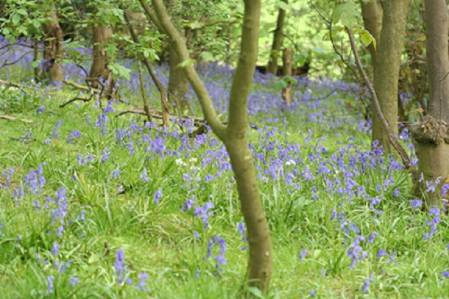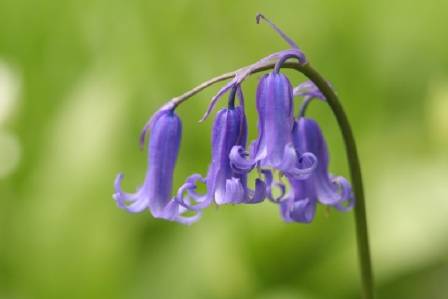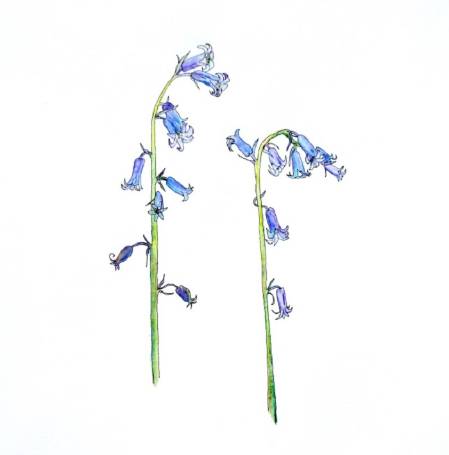This week Sally Hyslop, one of the trainees on our Identification Trainers for the Future programme, gives an update on the results of our 9-year-long Bluebell Survey:
The arrival of bluebells each spring is an iconic sight. The floods of nodding colour characterise our ancient woodlands, support a commotion of insect life and make up an important part of Britain's natural heritage. Our native bluebell species is widespread in Britain; in fact half of the world's population is found here. But the introduction of non-native bluebells, planted in our parks and gardens, may be threatening our native species.
Bluebells are iconic to our woodlands. Copyright: Mike Waller.
The introduced Spanish bluebell is deceptively similar to our native species, except for a few subtle differences in its features. It is broader in size, its petals flare out a little more, and the pollen is not white, but characteristically blue.
Spanish bluebells can breed freely with our native species, creating a hybrid plant with features from both species. Since the Bluebell Survey started in 2006, citizen scientists have been carefully identifying bluebells across Britain and recording the whereabouts of native, non-native and hybrid forms. This helps us to investigate these changes.
Exploring change in Britain's bluebells is no easy task, but by submitting their records, citizen scientists have created a nationwide picture of our bluebells. Using this data, scientists at the Museum have gained a greater understanding of the threats to our native species.
For example, we now know that, although large populations of native bluebells exist in the countryside, in urban areas hybrid bluebells are increasingly common. Each hybrid bluebell has a mixed genetic make-up, inheriting a blend of features from both its native and non-native parent. The mixed hybrids may cope better with changing environments and could out-compete our native species.
A native bluebell with characteristic bell shape and nodding tip. Copyright: Mike Waller.
To better understand the threat of hybrid bluebells, we have been asking citizen scientists to record flowering times for the bluebells they identify. Using this data, scientists will uncover how native, non-native species and their hybrids are responding to climate change.
Due to natural fluctuations in climate, scientists need many years of data to accurately interpret the effect of climate change on flowering time. This is why records from the public continue to be so important! If you have been or want to take part, by collecting this information over several years and for the same plants, you can provide scientists with consistent data to study our bluebells.
The effect of climate change on Britain's biodiversity is likely to be vast, but by collecting data we can start to work with the unpredictable, anticipate the future and direct change. If you'd like to help discover more about Britain's bluebells take part in 2015's Bluebell Survey.
Illustration Copyright: Sally Hyslop.
Thanks Sally! As part of her work as an Identification Trainee at the Museum, Sally has been collating and managing the records that you have been sending in for this year's Bluebell Survey.
And, for another take on the Bluebell Survey, see the latest from the Wildlife Garden blog.
Jade Lauren





